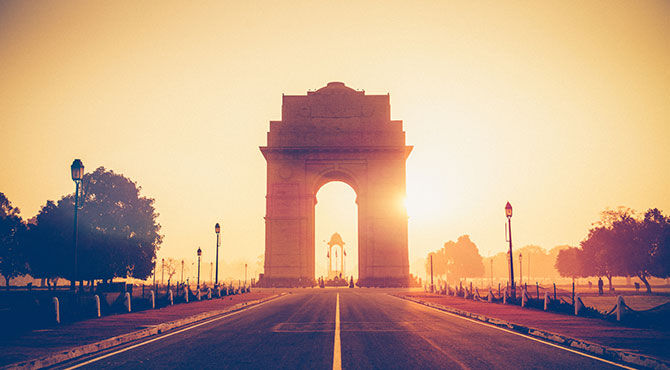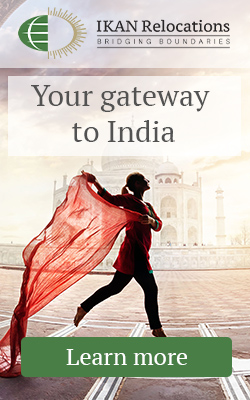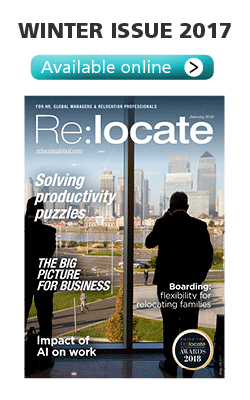Background guide to cities in India
Major cities in India such as the capital of Delhi are quickly on the rise. IKAN provides an overview of some of the countries major cities, including their culture, food, travel, education and transportation.

The history of Delhi
The city is also one of the oldest continually inhabited cities of India and it’s history can be traced back to the 6th century BC.Through most of its history, Delhi has served as a capital for various kingdoms and empires. It has been built, captured, ransacked and rebuilt ten times, particularly during the medieval period.This city is believed to be the site of Indraprastha, legendary capital of the Pandavas in the Indian mythological epic, the Mahabharata.Delhi’s culture has been influenced by its lengthy history and historic association with other foreign cultures. This is exemplified by many significant monuments in the city.The Mughals and the Turkic rulers constructed several architecturally significant buildings, such as the Jama Masjid – India’s largest mosque, and the Red Fort. Three World Heritage Sites – the Red Fort, Qutab Minar and Humayun’s Tomb – are located in Delhi. Other monuments include the India Gate – built by the British to commemorate Indian soldiers who lost their lives during the first world war, the Jantar Mantar – an 18th century astronomical observatory, and the Purana Qila – a 16th century fortress.Language in the city
The official language in Delhi is Hindi, since the Hindu population is dominant in the city, most of the people converse in Hindi only, though, the dialects may differ. The major languages spoken in Delhi include Punjabi as well as English, which has become a widely used medium of communication in the capital city. Especially, the youngsters tend to communicate more in English among themselves. However, Delhi does not have any regional language of its own.Delhi's cuisine
As India’s national capital, Delhi is where the Mughalai cuisine originated. Along with the Indian cuisine, a variety of international cuisines are popular among the residents.The city’s residents created a unique style of cooking which became popular throughout the world, with dishes such as Kebab, Biryani and Tandoori. The city’s classic dishes include Butter Chicken, Aloo Chaat, Dahi Vada, Kachori, Chole Bhature, Jalebi and Lassi.Climate in the Delhi region
Delhi features an atypical version of the humid subtropical climate. TherCultural challenges for expats in Indiae are high variations between summer and winter temperatures. The warm season lasts from April to July with the highest temperature touching 45 °C. During the peak summer time, it is advisable to keep the head covered, carry sunscreens and chap sticks, and of course drink a lot of liquids. The monsoons arrive at the end of June, along with an increase in humidity, which lasts untill the end of August. The rains are welcomed whole-heartedly in Delhi post the intense summers.
Related stories:
- IKAN Relocation Services: Background guide to India
- Cultural challenges for expats in India
- IKAN report: The history of corruption in India
The cold season lasts from mid-November to mid-February with the lowest temperature touching 3-4 °C. It can get very foggy and chilly during peak winters, and proper precautions should be taken while stepping out to avoid a cold or a fever or other illnesses that one may be prone to.
Cultural life of Delhi
The Cultural life of Delhi is closely related to the diversity of its population. You will find people in Delhi hailing from different parts of India making it a melting pot. The multi-cultural spirit can also be witnessed during any festival when the folks iron out the region, religion, class, caste barriers and heartily participate in the festivities.Delhi celebrates traditional festivals like Diwali – the festival of lights, Dussehra, Holi – the festival of colors, Lohri, Janamashtami – Birthday of Lord Krishna, Guru Nanak Jayanti, Raksha Bandhan, Durga Puja (festival of the east), Eid ul-Fitr – festival of Muslims, Buddha Jayanti and Christmas, which are all celebrated with a lot of enthusiasm and joy. Some of the holidays are fixed while others follow the lunar calendar or local customs and the dates of observance are subject to change.There are a large number of preferred leisure, recreation and shopping areas in Delhi. The most popular ones include Connaught Place, Chandni Chowk, Karol Bagh and the upscale Khan Market. All these are open marketplaces which have a plethora of shops and restaurants. There are plenty of large malls as well, which attract the urban residents on a regular basis.Residential property and transport
Neighborhoods in and around Central Delhi and South Delhi are the preferred localities for expats. There areas are Chanakyapuri, Jor Bagh, Golf Links, Sunder Nagar, Vasant Vihar, Anand Niketan, Shanti Niketan, Westend, Defence Colony, New Friends Colony and Maharani Bagh.These neighborhoods not only have the advantage of being closer to both the embassy and international schools, they are also closer to the domestic and international airports, and the suburban cities of Delhi. Quality of residential properties in Delhi are on a par with international standards, with newly built modern apartments available for rentals along with few old, traditional independent bungalows.Delhi is well connected by good roads, executives may use multimodal methis to travel to work. Bus, auto rickshaw, metro, cabs/leased cars are popular, besides personal transport like two wheelers and cars.Health and education in Delhi
Apart from meeting local needs, Delhi hospitals, clinics and alternative healing centres draw patients from around the world.A large number of people, most of them from Africa, South Asia, Middle East, Europe and the US, come to Delhi to get world-class treatment at a reasonable cost. This business segment of health and medical tourism is considered to be one of the fastest-growing industries in general and in Delhi in particular. There are some excellent private hospitals and specialist clinics in Delhi like the Max Hospital, Apollo Hospital, and the Fortis Hospital. Delhi schools consistently rank among the best in India, offering both excellent academic guidance as well as a wide range of extra-curricular activities for all round development. The best curriculums are represented in the city – CBSE, ICSE, ISC, PUC, IGCSE and IB. One may come across various school names while researching on the internet. For a better understanding of the schools, they may be classified into: international schools, Indian international schools & Indian schools. The most well known international schools in Delhi are the American Embassy International school, the British school, Japanese school and the French school.Information provided by IKAN Relocation Services.
Look out for the launch of Mobility Industry, entries open in January. Relocate’s new Global Mobility Toolkit provides free information, practical advice and support for HR, global mobility managers and global teams operating overseas.
 Access hundreds of global services and suppliers in our Online Directory
Access hundreds of global services and suppliers in our Online Directory
©2025 Re:locate magazine, published by Profile Locations, Spray Hill, Hastings Road, Lamberhurst, Kent TN3 8JB. All rights reserved. This publication (or any part thereof) may not be reproduced in any form without the prior written permission of Profile Locations. Profile Locations accepts no liability for the accuracy of the contents or any opinions expressed herein.
























